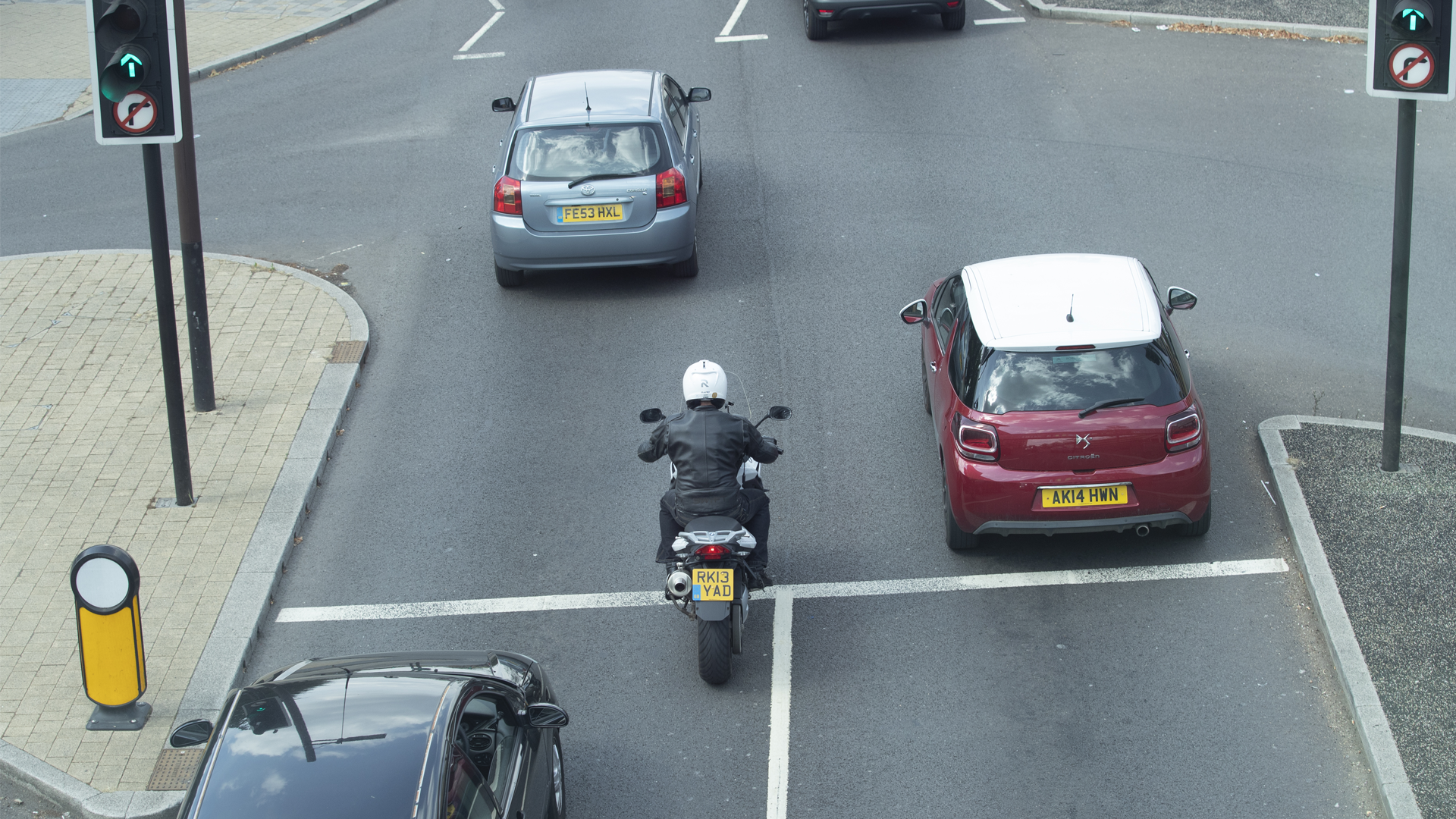
Filtering
Take the fear out of filtering
How to make edging through traffic in town or on a congested motorway an art form
Few people enjoy riding through an unknown, busy city centre or between endless clogged lanes on dual carriageways or motorways – so don’t feel like you’re the only one feeling under pressure. Riding too close to vehicles limits your view and gives you less time and space to think and react. Create space. Urban riding can cause stress, which has a negative effect on your ability to process hazards. Keep calm and carry on. Use your eyes to scan your environment; the distance, the mid-ground, sides and rear, getting clues about any hazards. Use your indicators, that way other road users will be aware of your intentions and may even leave you a bit of a gap. It’s usually necessary to filter past other traffic in towns. Keep your speed down and look for pedestrians crossing.
Urban areas are frantic but there’s no need for your attitude to be the same. Slow your pace to give yourself more time to consciously scan the scene ahead for road signs, lane markings and potential hazards.
Deliberately hang back from the car in front to give yourself a bit of breathing space. Adopt a dominant lane position to maximise your view and also prevent any traffic from encroaching into your path. Need to change lanes or turn? Rather than waiting for a gap, put your indicator on early as this gives other road users time to read your intent and give you the space you need to move. Whatever you’re doing, indicate, even if it’s a feeder lane. Changing path without indication confuses other road users.
A shocking number of drivers will reach for their phone the moment traffic slows, and this means they almost certainly have no idea you’re there – assume you’re invisible, but not invincible.
QUICK TIPS
Approaching stationary traffic
Queuing traffic is often caused by an approaching junction, meaning drivers may be distracted or change lanes suddenly. Never cross solid white lines (down the centre or around hatched boxes), and avoid cycle boxes. Never enter stationary or slow-moving traffic at speed.
Get it right in your head
Actively think through key observations and hazard perception. How far ahead can you see? Is it possible for cars to do U-turns or change lanes? What speed is the queue moving? What’s your escape plan? Are you covering both front and rear brakes?
The speed of progress
Using appropriate speed is critical. In gridlocked traffic you should be at 15-20mph, and 5mph above the traffic flow when it’s crawling – maximum. Don’t be tempted to go faster. Car drivers will often open their door and step out to see what’s ahead, or change lanes without warning. The faster you go, the less time you have to react.
Use gaps and breaks to your advantage
Gaps in the traffic can be used to give you a break, the opportunity to take stock, relax, reappraise and forge ahead again. They can also entice car drivers into kamikazee lane changes, so be wary. If other drivers deliberately move over to give you more room, make sure you gesture your thanks, so they do it for the next rider, too.


